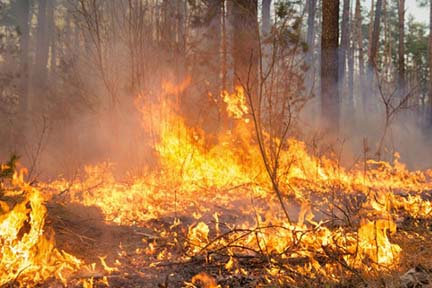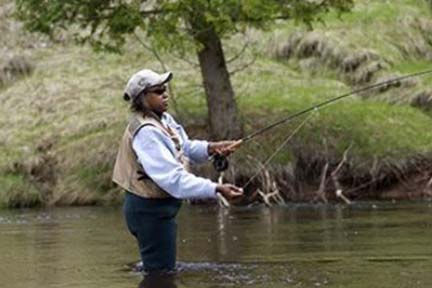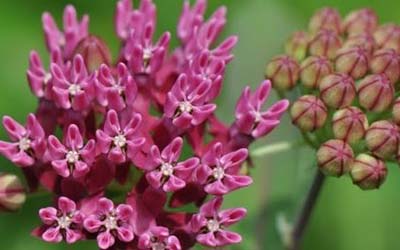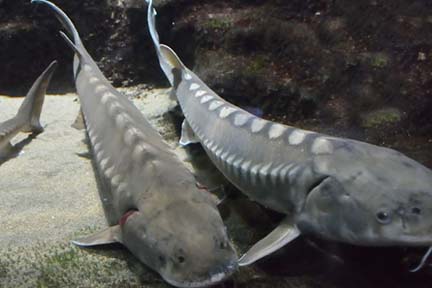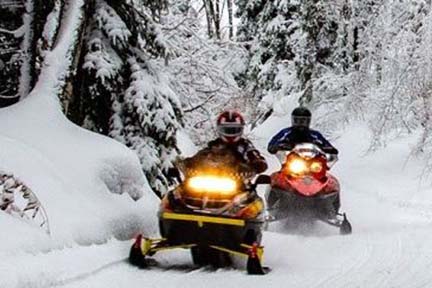| Here are just a few of this week’s stories from the Michigan Department of Natural Resources:
See other news releases, Showcasing the DNR stories, photos and other resources at Michigan.gov/DNRPressRoom.
PHOTO FOLDER: Larger, higher-res versions of the images used below, and others, are available in this folder.
 Want to see more pictures like this, taken by Michigan state parks photo ambassador Diane Wilks at Belle Isle State Park in Wayne County? Visit Instagram.com/MiStateParks to explore photos and learn more about the photo ambassadors! For more on the photo ambassador program, call Stephanie Yancer at 989-274-6182. Want to see more pictures like this, taken by Michigan state parks photo ambassador Diane Wilks at Belle Isle State Park in Wayne County? Visit Instagram.com/MiStateParks to explore photos and learn more about the photo ambassadors! For more on the photo ambassador program, call Stephanie Yancer at 989-274-6182.
 Warmer weather has arrived in some parts of the state and is coming soon to the rest! While setting out the lawn chairs, you might notice your yard has accumulated some unwanted scenery: fallen leaves, twigs and branches from seasonal pruning, and the remnants of last year’s foray into gardening are majorly harshing the BBQ vibes. Warmer weather has arrived in some parts of the state and is coming soon to the rest! While setting out the lawn chairs, you might notice your yard has accumulated some unwanted scenery: fallen leaves, twigs and branches from seasonal pruning, and the remnants of last year’s foray into gardening are majorly harshing the BBQ vibes.
While you’re dreaming of warm-season fun, keep in mind that as temperatures rise and the ground dries out, spring also paves the way for wildfire season. Most wildfires are started by humans, so be extra careful with how you plan to dispose of yard waste or other materials.
If you’re planning to open burn, let’s make sure all your questions are answered:
What is a burn permit and why do I need one?
The State of Michigan’s burn permit is required for burning any unwanted material, such as yard waste or paper products. It’s not a physical permit you apply for. Instead, you can check online to see if weather conditions allow for you to safely open burn.
Burning trash, plastic, Styrofoam or other hazardous materials is never permitted and can have serious effects on your health. A burn permit is required anytime snow is not covering the ground.
For the Upper Peninsula and the northern half of the Lower Peninsula, you can check online to see burn conditions for your county. For the southern Lower Peninsula, contact your local fire department or governing body for a burn permit.
Individuals can be held legally responsible for letting a fire escape, and additional city or township burn restrictions may be in effect. Always double check before lighting anything.
“Nine out of 10 wildfires in Michigan are caused by people, but following a few simple fire safety tips can reduce the risk for everyone,” said Paul Rogers, DNR fire prevention specialist. “When you’re burning, always have a water source and shovel nearby to thoroughly extinguish the embers, and never leave your fire unattended.”
What other options do I have?
Burning your yard waste isn’t the only way to dispose of it. Here are some other ideas for getting your yard in shape:
- Composting can retain soil nutrients for your yard, giving flowers, trees and other plants a boost.
- Leave the leaves if you can – they are a fantastic habitat for native pollinators!
- Chip up woody material for garden beds or pathways.
To learn more and see if conditions are safe for burning, visit Michigan.gov/BurnPermit.
For fire safety tips, visit Michigan.gov/PreventWildfires.
Questions? Contact DNR fire prevention specialist Paul Rogers at 616-260-8406. |
 What do you know about the 38th president of the United States, Gerald R. Ford? Maybe his brief presidency in the 1970s is ancient history to you, or perhaps you’re old enough to recall Chevy Chase parodying President Ford on “Saturday Night Live.” Whatever the case, there is so much to know about the life and legacy of the only U.S. president from Michigan. What do you know about the 38th president of the United States, Gerald R. Ford? Maybe his brief presidency in the 1970s is ancient history to you, or perhaps you’re old enough to recall Chevy Chase parodying President Ford on “Saturday Night Live.” Whatever the case, there is so much to know about the life and legacy of the only U.S. president from Michigan.
Join the DNR’s Michigan History Center Thursday, April 13 at 2 p.m. for “An Ordinary Man,” in-depth conversation about President Ford, his family and his life between two men who knew him: author and nationally recognized historian Richard Norton Smith and Hank Meijer, vice-chairman and a trustee of the Gerald R. Ford Presidential Foundation.
After the discussion, there will be time for audience questions and a book signing of Smith’s latest presidential biography “An Ordinary Man: The Surprising Life and Historic Presidency of Gerald R. Ford.”
The event is free of charge at the Michigan Library and Historical Center, 702 W. Kalamazoo St., Lansing. |
 Spring is here, and the DNR’s April calendar is full of opportunities to enjoy and learn more about Michigan’s natural and cultural resources. Spring is here, and the DNR’s April calendar is full of opportunities to enjoy and learn more about Michigan’s natural and cultural resources.
Try a new outdoor activity, or get better at one, with the DNR Outdoor Skills Academy. Learn strategies and techniques for chasing Michigan’s “chrome torpedoes” at the April 15-16 steelhead fishing clinic or the A to Z of walleye fishing at the April 16 walleye clinic, both in Cadillac. And sign up now for the Saginaw Bay walleye clinic, coming up May 2-3 in Bay City. See a full schedule of classes at Michigan.gov/OutdoorSkills.
The Outdoor Adventure Center in Detroit offers a variety of fun for all ages this month. The April calendar features a variety of archery programs throughout the month, education programs for kids and seniors, opportunities to learn more about our avian friends with Birding Belle Isle April 16 and the Detroit Pheasant Walk April 30, and a boater safety class April 22. Get up close to cows, pigs, chickens and more during Down on the Farm in Downtown Detroit April 23, and learn how to make a wine bottle hummingbird feeder April 28. Find more info about these and other programs on the Outdoor Adventure Center events calendar.
Also on the April agenda are Maple Syrup Day at Hartwick Pines State Park in Grayling April 8, Easter egg hunts, a dark sky event at Lake Hudson Recreation Area in Lenawee County April 22 and more. For a full list of DNR events, see Michigan.gov/DNRCalendar. |
 Each month, the DNR offers a variety of opportunities to help take care of Michigan’s natural and cultural resources. Here are a few ways to get involved this April. Each month, the DNR offers a variety of opportunities to help take care of Michigan’s natural and cultural resources. Here are a few ways to get involved this April.
State park volunteer stewardship workdays
Several state parks in southern Michigan will host stewardship workdays, where volunteers are needed to help remove invasive plants that threaten high-quality ecosystems.
Workdays will take place at:
- Warren Dunes State Park (Berrien County), 10 a.m. to noon Saturday, April 8 and April 29.
- Bald Mountain Recreation Area (Oakland County), 9 a.m. to noon Saturday, April 15.
- Yankee Springs Recreation Area (Barry County), 10 a.m. to 12:30 p.m. Sunday, April 16 and April 30.
- Fort Custer Recreation Area (Kalamazoo County), 10:30 a.m. to 1 p.m. Saturday, April 22.
- Waterloo Recreation Area (Washtenaw County), 10 a.m. to 1 p.m. Sunday, April 23.
- Island Lake Recreation Area (Livingston County), 10 a.m. to 1 p.m. Saturday, April 29.
- Brighton Recreation Area (Livingston County), 10 a.m. to 1 p.m. Sunday, April 30
More details about each workday and how to register can be found on the DNR volunteer events calendar.
Wolf Lake Fish Hatchery volunteer open house
Want to turn your passion into action? Learn about volunteering at Wolf Lake State Fish Hatchery Visitor Center in Mattawan during an open house from 5 to 7 p.m. Wednesday, April 19. Find out how you can make a difference by getting involved in opportunities with kids’ fishing, stewardship projects and more, and join a special, behind-the-scenes hatchery tour at 6 p.m. Light refreshments will be available.
On the Ground habitat improvement projects
Join in fish and wildlife habitat improvement efforts with On the Ground, Michigan United Conservation Clubs’ volunteer program in partnership with the DNR. Projects coming up in April include:
- Clinton River watershed cleanup, 9 a.m. to 1 p.m. Saturday, April 15 in Pontiac (Oakland County). Volunteers will help the Clinton River Watershed Council and Metro-West Steelheaders clean up Dawsons Millpond at Beaudette Park and Upper Silver Lake at Hawthorne Park.
- Brush pile building in Kalkaska County, 9:30 a.m. to 2 p.m. Saturday, April 22. Part of the Mark Kenyon’s national Working for Wildlife Tour. Volunteers will be working to maintain wildlife openings and build brush piles on public hunting land in the Traverse City Forest Management Unit.
- Brush pile building and edge-habitat enhancement, 10 a.m. to 3 p.m. Saturday, April 29 in St. Clair County. Work with the Robert J. Lytle Chapter of the Ruffed Grouse Society to remove invasive woody vegetation and create brush piles for wildlife habitat at Port Huron State Game Area.
Find more details and register for these events at MUCC.org/on-the-ground.
For more opportunities to volunteer, contribute and provide input, visit Michigan.gov/DNRVolunteers. |
|
